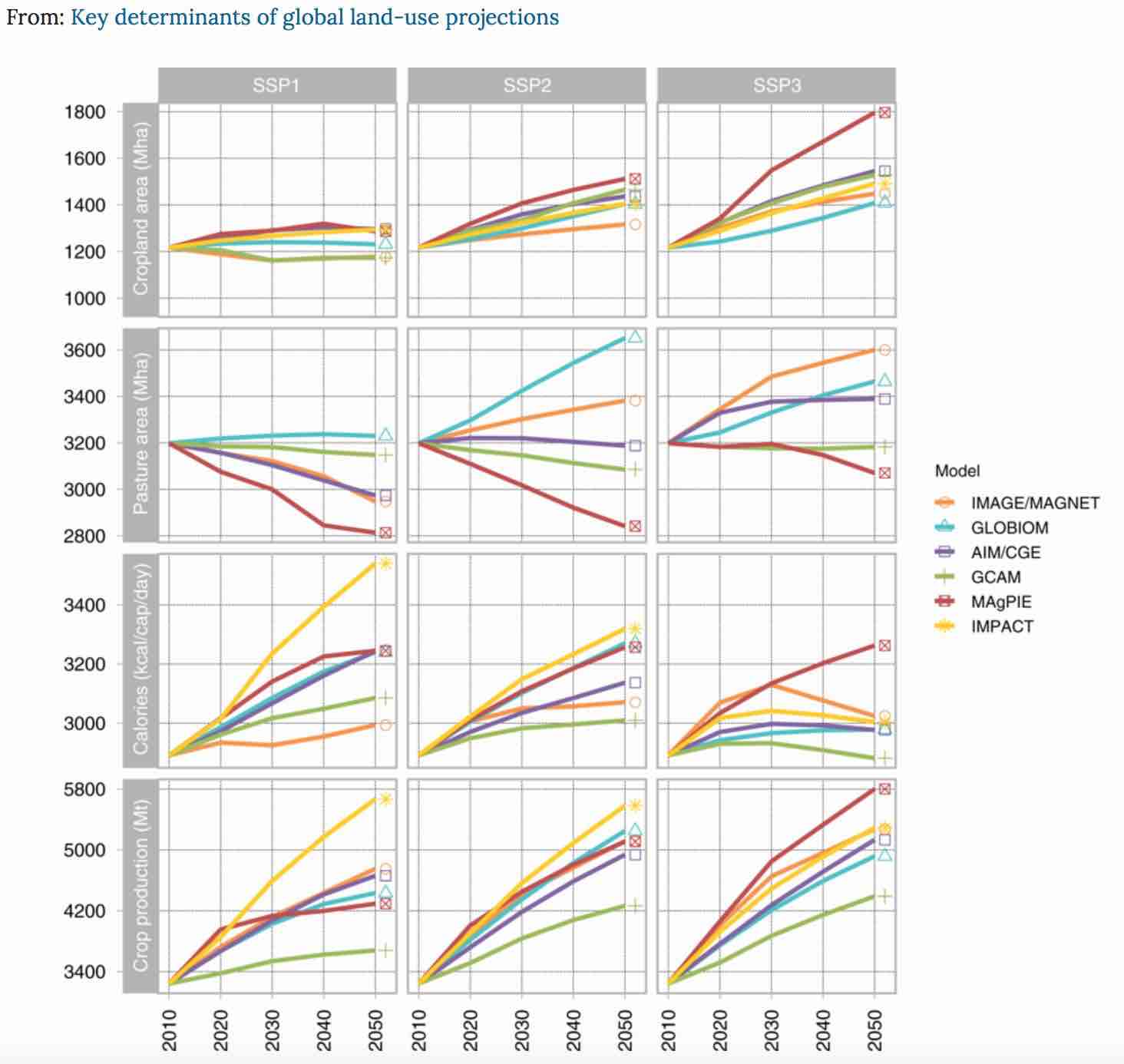New Paper on Key Determinants of Global Land-Use Projections Published in Nature
May 20, 2019
By: Amanda Evengaard and Carolyn Mutter
A new paper: Key determinants of global land-use projections, by Stehfest et al. 2019, was recently published in Nature.
The paper builds on a recently developed sensitivity approach to improve land-use projections and identify the possibility for different global land-use directions in the future and how future land-use depend on six socio-economic drivers and their interactions: population, wealth, consumption preferences, agricultural productivity, land-use regulation, and trade.
Land-use is highly connected to various sustainable development goals and is a key component for the long-term sustainability agenda. Prior studies have shown a great variety in global land use projections, this paper builds on a recently developed sensitivity approach and takes into account six socio-economic drivers compared to prior studies using five.
The authors explain how variations in results depend mostly on differences in sensitivities to long-term drivers and from different descriptions of land-use regulation and trade, therefore the paper emphasizes a need for reconciliation efforts and more empirical research.
The paper indicates that population and agricultural efficiency are key determinants for the extent of future crop land and pasture. The authors also describe how land-use regulation and consumption changes need to be central elements in sustainable development strategies as they can play a key role in reducing both land use and food-security risks.
The paper shows the possibility for different global land-use directions in the future, either based on historical expansion of cropland and pasture or moving toward a reversing trend in agricultural land use. As further described in the paper, the different global land-use directions will have different impacts in terms of greenhouse gas emission, biodiversity, and potential for carbon uptake and bioenergy production.

Key characteristics of global agriculture and land use in SSP1, SSP2 and SSP3. Model results were standardized to a common value in 2010. The order of models in the legend follows the publication of land use in the SSPs, with SSP1, SSP2, SSP3, SSP4 and SSP5 being represented by IMAGE, GLOBIOM, AIM, GCAM and MAgPIE, respectively.
The article summarizes: ’’Consumption changes, better land management, and increased agricultural productivity therefore appear robust and effective measures to reduce the demand for agricultural land, in particular when bundled together. As land-use development is closely tied to challenges related to biodiversity, food security, or climate, the targeting of these measures appear as a key component of the long-term sustainability agenda.’’
View the paper here.
